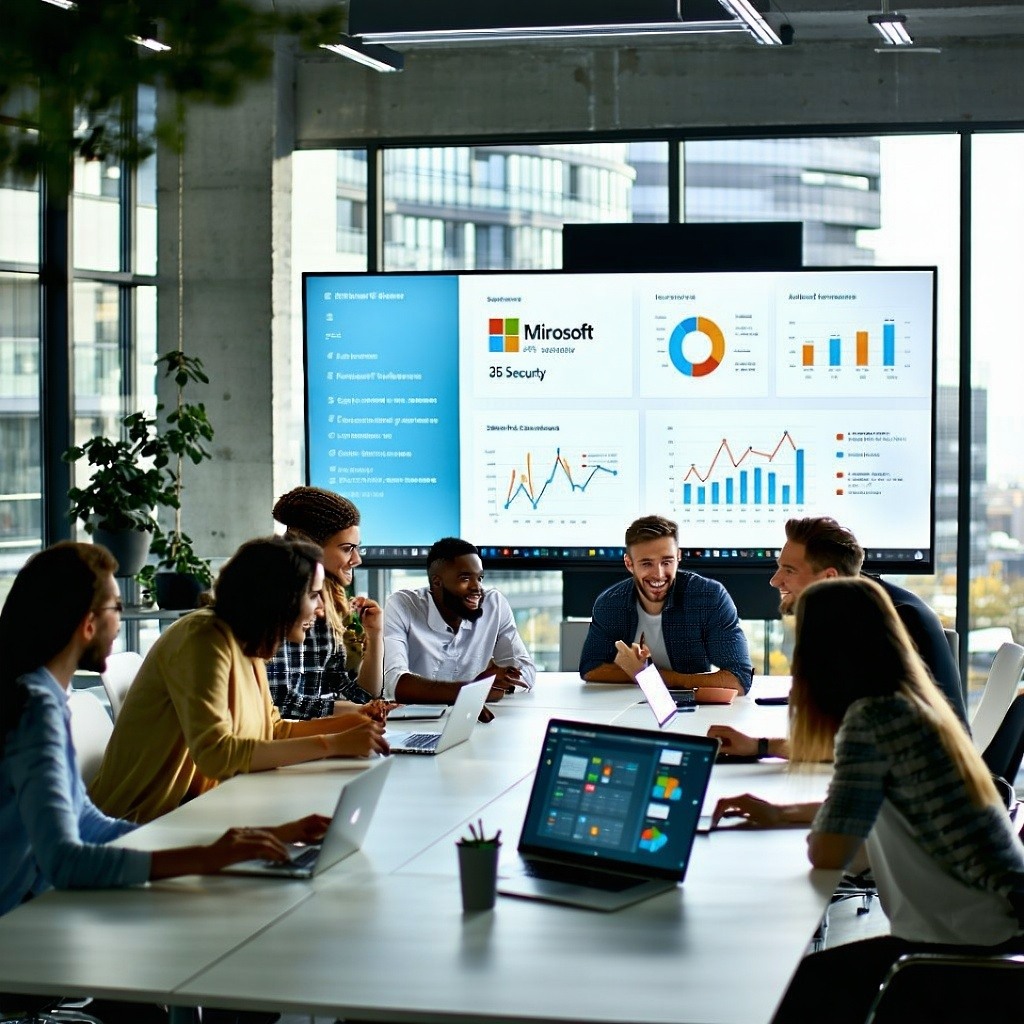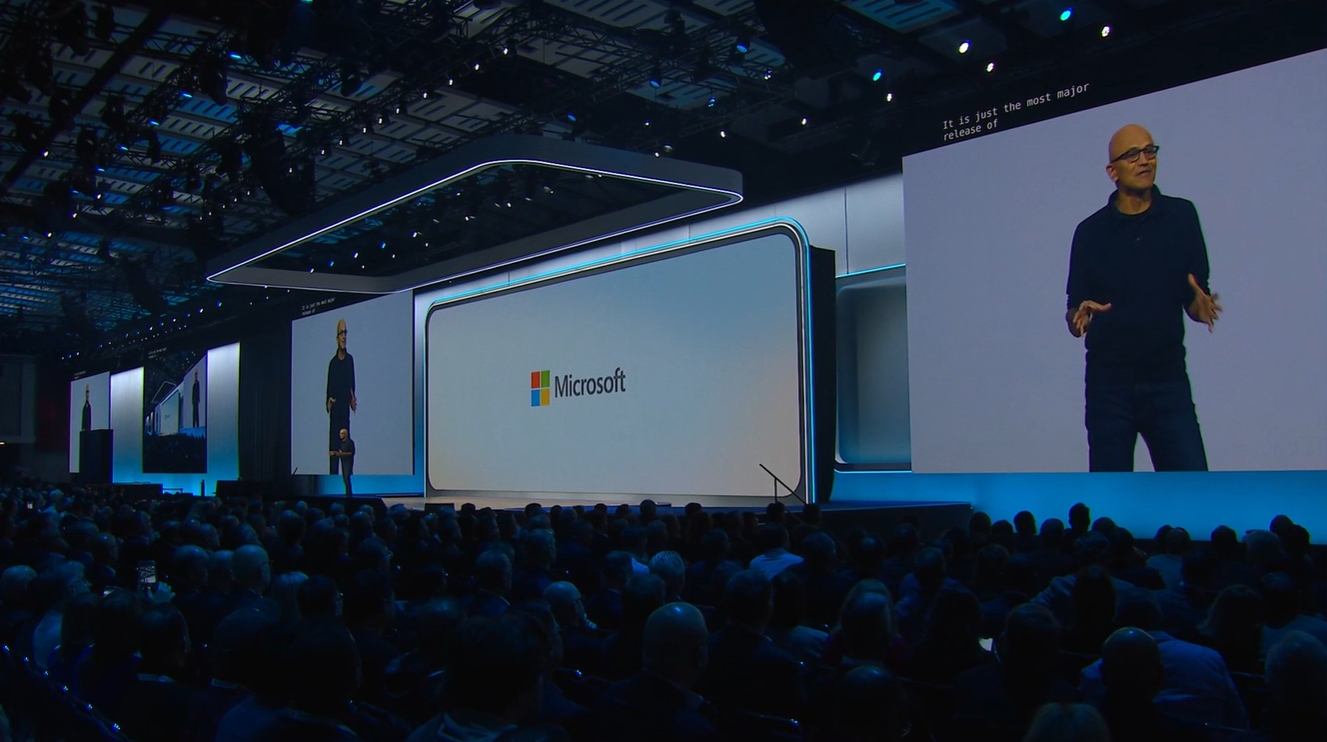It is a genuine pleasure to be invited back to Nerdiocon again for the 3rd straight year. Nerdio are a very important partner to FIT and their technology genuinely helps us solve problems for ourselves and our clients when it comes to their Azure Virtual Desktop environment.
Everytime I attend this event I learn a huge amount about where the industry and the specific technologies we care about are headed. I also learn from peers that run MSP's all over the world and the collective insight from the event inspires ideas and affirms our directions as a business. Whilst its hard sell to justify to family and friends that a few days in the Dominican is work, its an important week in the calendar for me personally and for FIT.
Everyone involved in organising the event should be very proud.
Here are some highlights from keynote sessions from Day 1:
Opening Keynote - Joseph Landes (CRO & Founder) & Vadim Vladimirskiy (CEO & Founder) - Nerdio
Capitalising on the Growing Opportunity in Microsoft Cloud with Nerdio.
Nerdio's growth and achievements since the last Nerdiocon event have been significant and validates the products positioning alongside Microsoft's AVD technology as the best practice approach to delivering Desktops in the cloud.
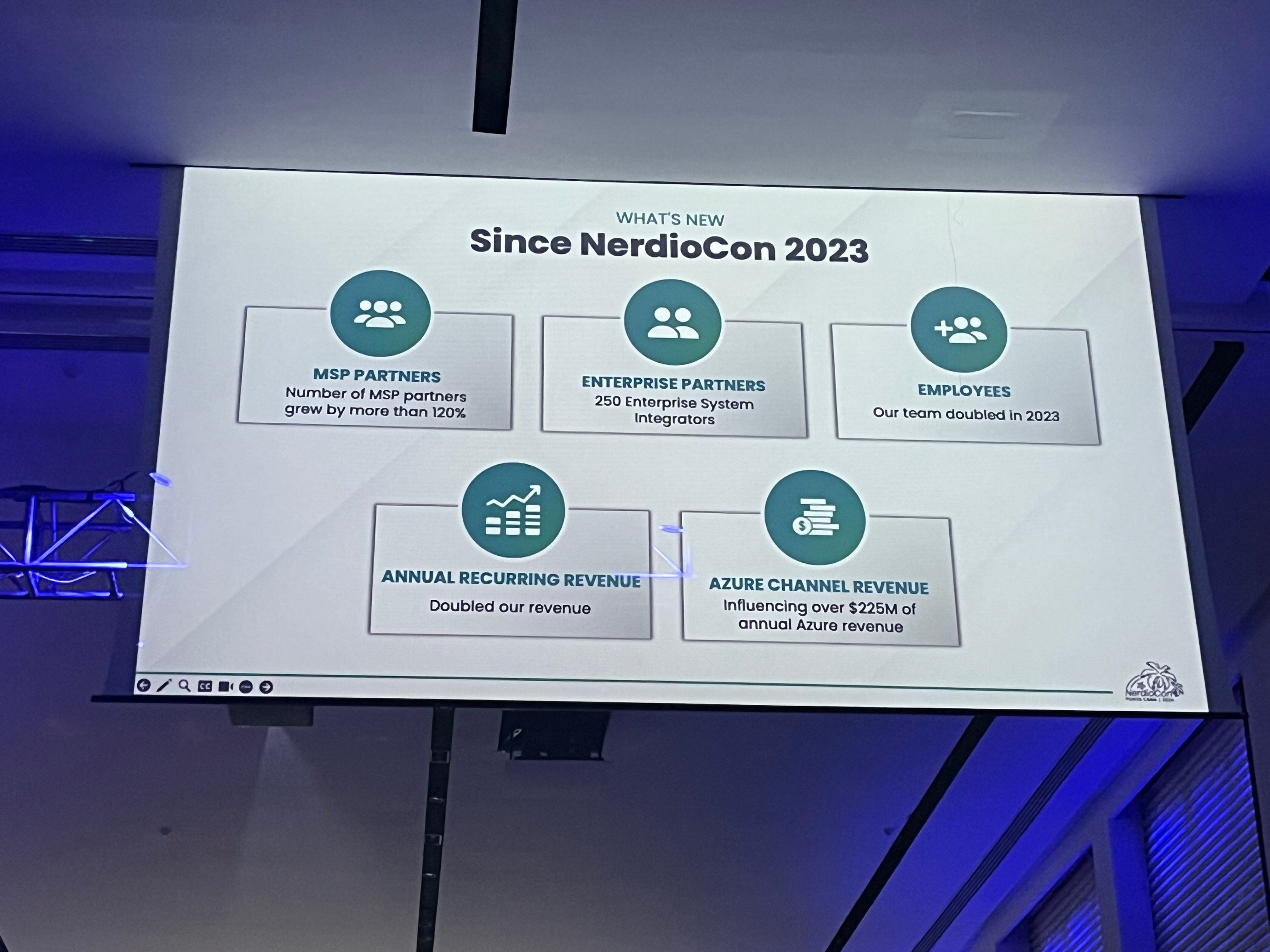
Joseph highlighted some of the key performance indicators, including the fact that Nerdio's annual revenue had doubled and is influencing over $225m of annual Azure Revenue.
Vadim spoke about the roadmap for both Nerdio Manager for Enterprise and Nerdio Manager for MSP being influenced by 3 main pillars - AI, Innovation with Virtual Desktop Management and extending Nerdio's capability beyond Azure, encompassing Physical Desktops, Apps and more.
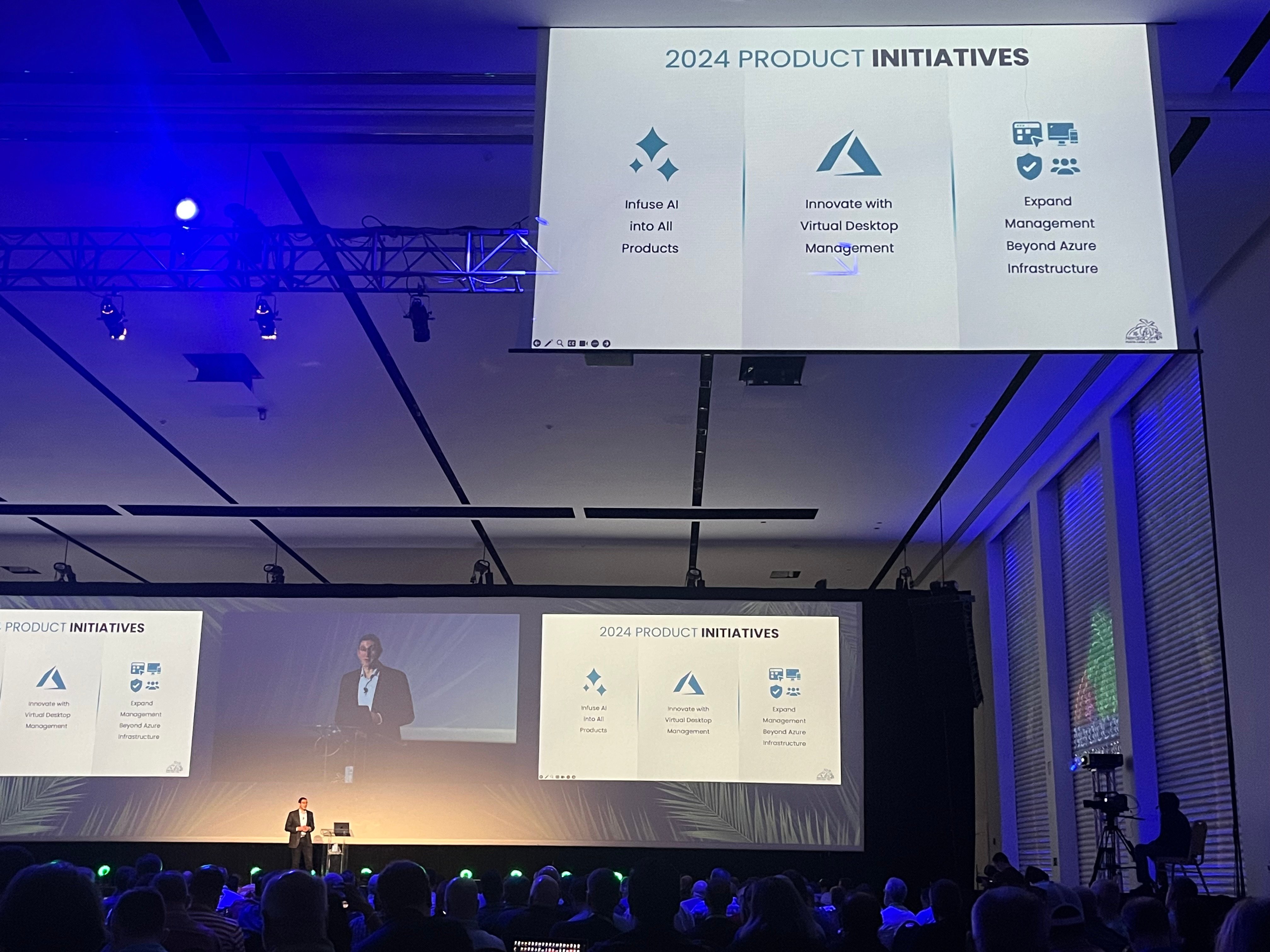
Specific Product Updates included:-
Nerdio Manager for MSP
- Console Connect - Remotely support user sessions on virtual and physical devices and manage Azure VMs from within NMM.
- Unified App Management - Centralising application storage and automate delivery to all virtual and physical endpoints.
- Solution Baselines - Monitor and enforce consistency of a broad set of settings across all customers, maintaining standards even it moments of config drfit.
- GenAI - image and backup validation, PII identification, AssistPro, and description generation.
- Defender for Endpoints - Onboard customers to DfE and centrally monitor policy compliance.
- Reserved Instance management - recommendations, purchase flow, utilization reporting.
- Rewst integration - 154 NMM API actions available in Rewst, introducing powerful automation capability into the technology.
Nerdio Manager for Enterprise:
- Continuous AzureVirtualDesktop optimisations - Personal desktop VM right-sizing, pooled host pool sizing, auto-scale optimisations. Ensuring environments are suitably optimised all the time.
- GenAI - A major step forward with integrating AI into the tool set with 3 new bots - AssistPro for support questions, ScriptPro for scripted action creation, InsightPro for report creation.
- Environment Assessment Mode - Allowing you to observe and recommend optimisations for existing AVD environments and execute the recommended optimisations within NME.
- Intune Policy Protection and Versioning - Backup, version, restore Intune policies.
- Unified App Management SCCM connector - Connect UAM to SCCM to deliver apps, deploy apps with scripted installs.
- Rimo3 integration - onboard, test, and validate apps with Rimo3 then export apps to NME and deliver them to end users.
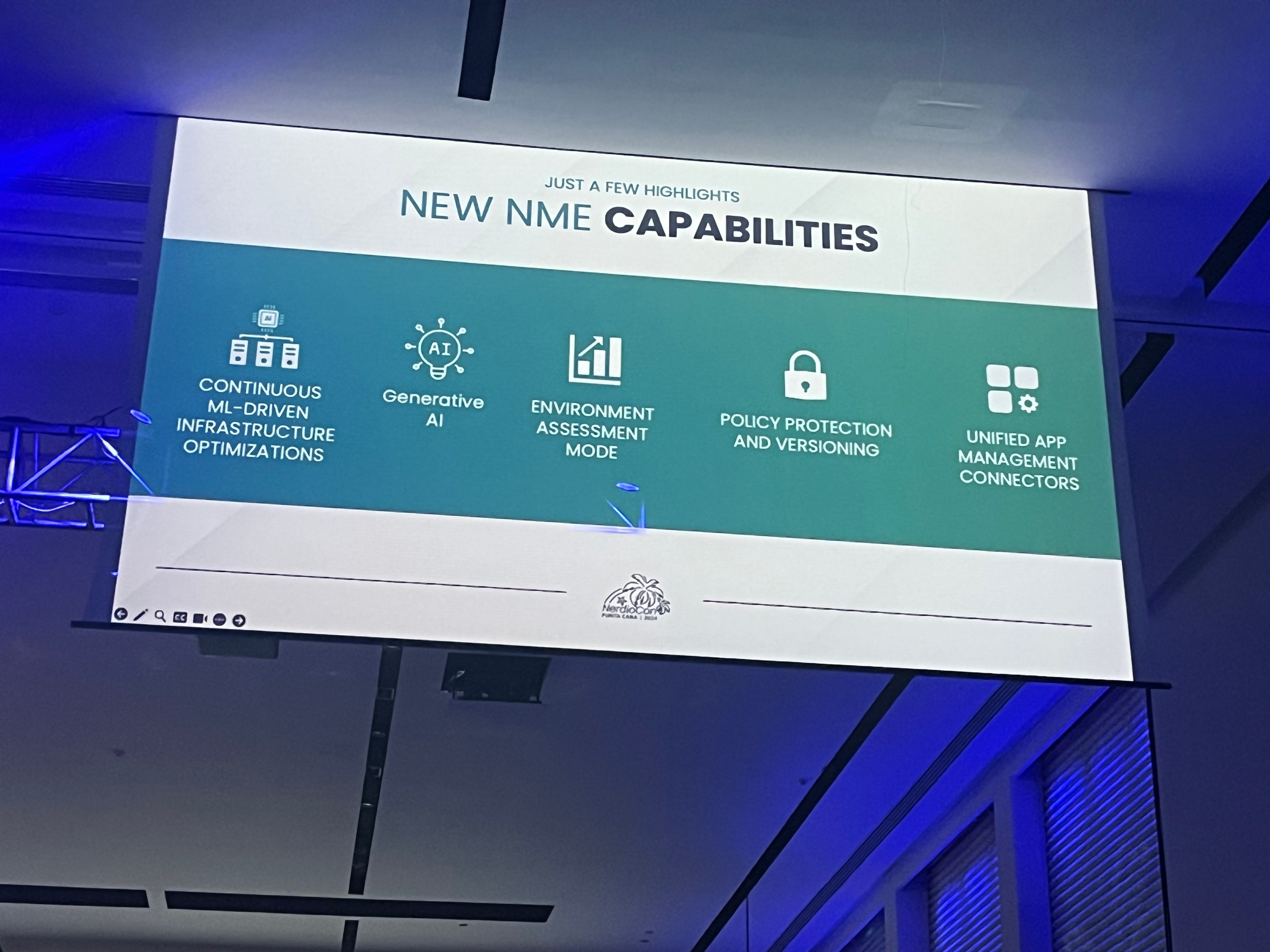
An exciting roadmap for both products. I am particularly excited about the introduction of AI into the tool set as well as the extended capabilities beyond AVD and Azure.
Erwin Visser - (General Manager of Cloud Service Provider Strategy and GTM) - Microsoft.
AI, Managed Services and the future of Cloud Delivery
Anyone thats been able to scale everest... is alright in my books. I'm looking forward to hearing Erwins story on that later in the week.
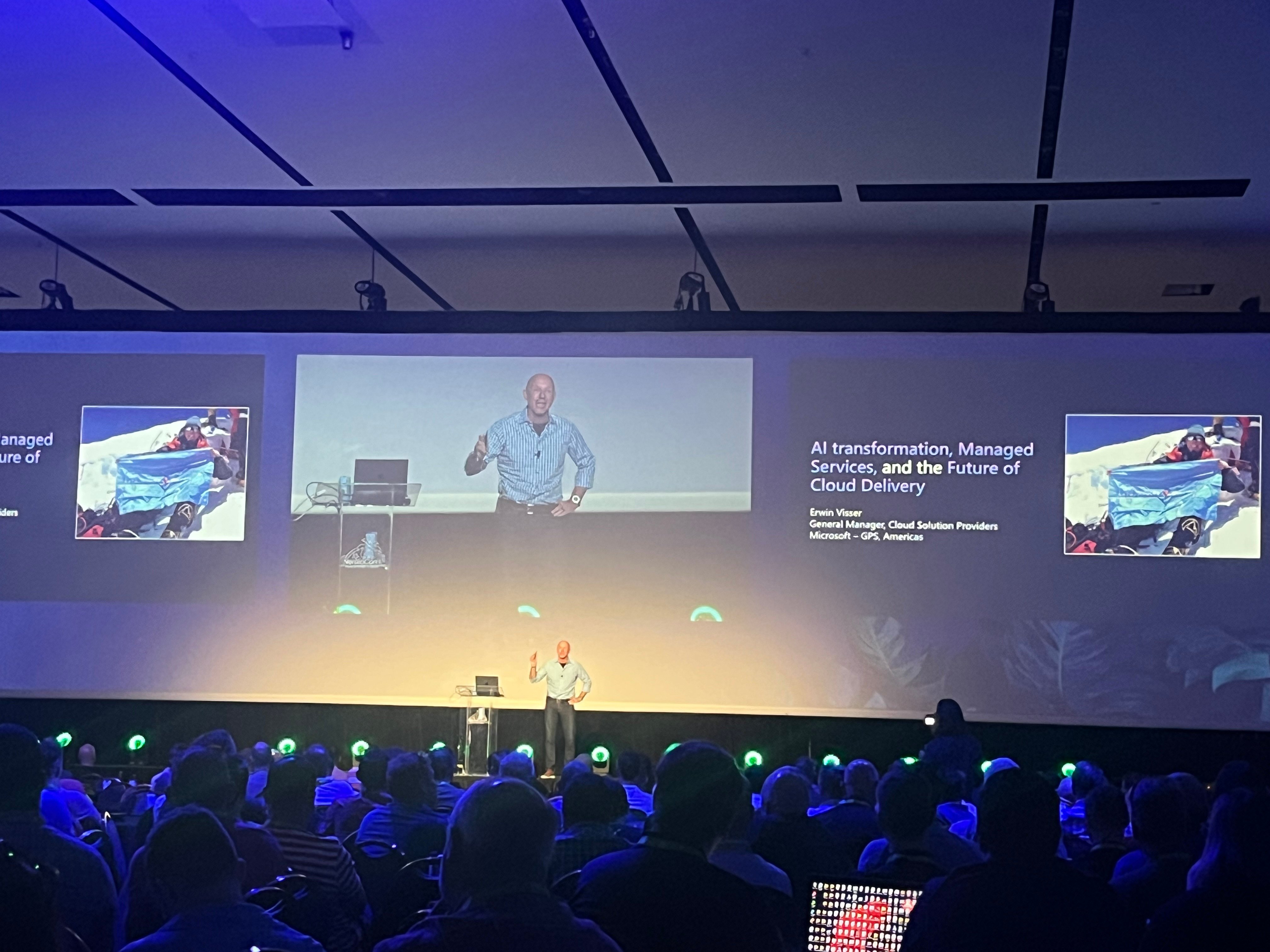
It wasnt surprising that AI was a feature of this years agenda and Erwin spoke about the market opportunity for AI in the coming years. Its hard to disagree with his sentiment that AI as a disruptive technology will impact our personal and professional lives more than the internet did and we really will be sat here in ten years time asking..."What did we do before we had AI".
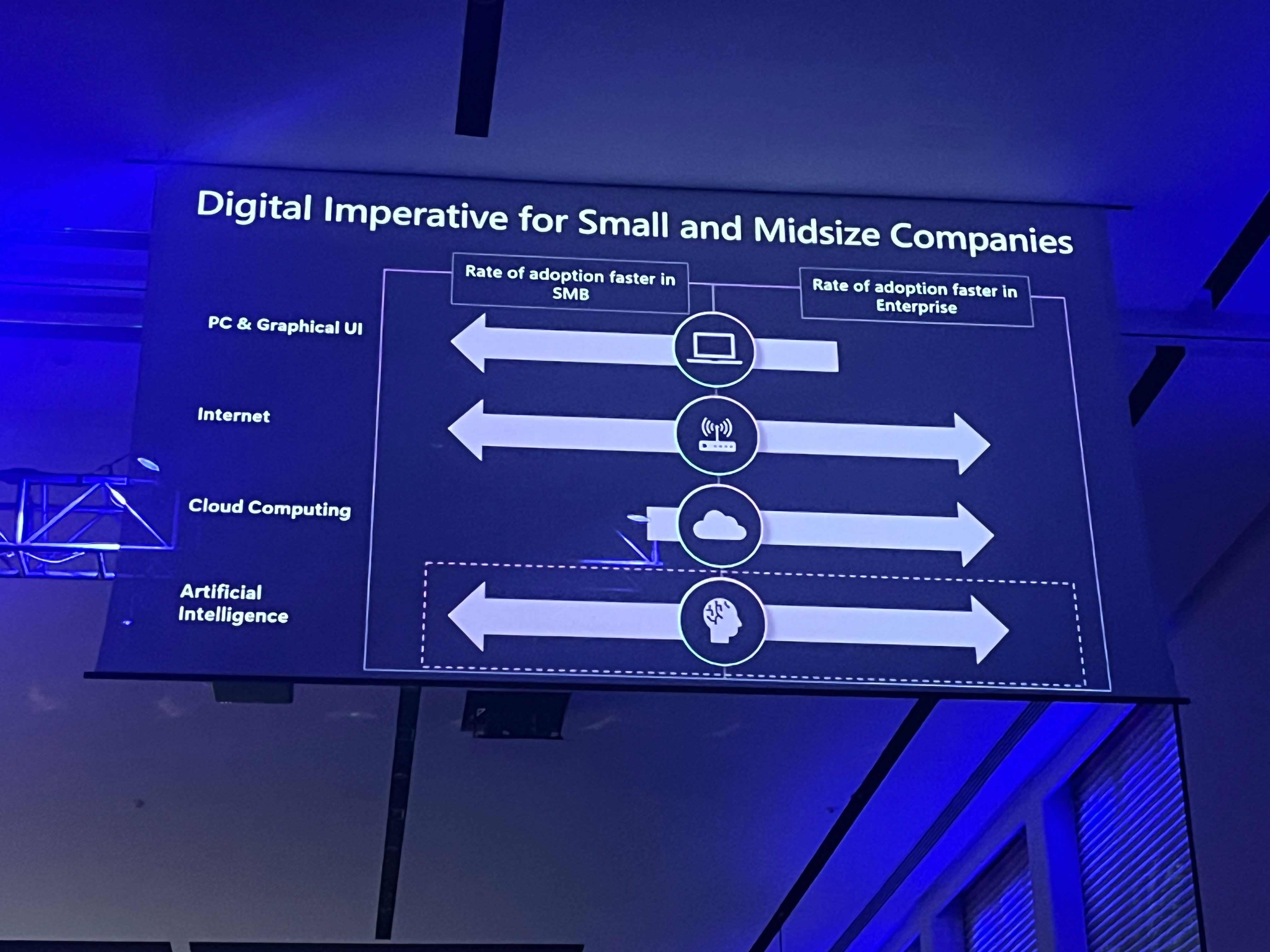
Erwin's keynote started by emphasing that so many of the top challenges businesses face today involve data at some level and how its importance is growing.
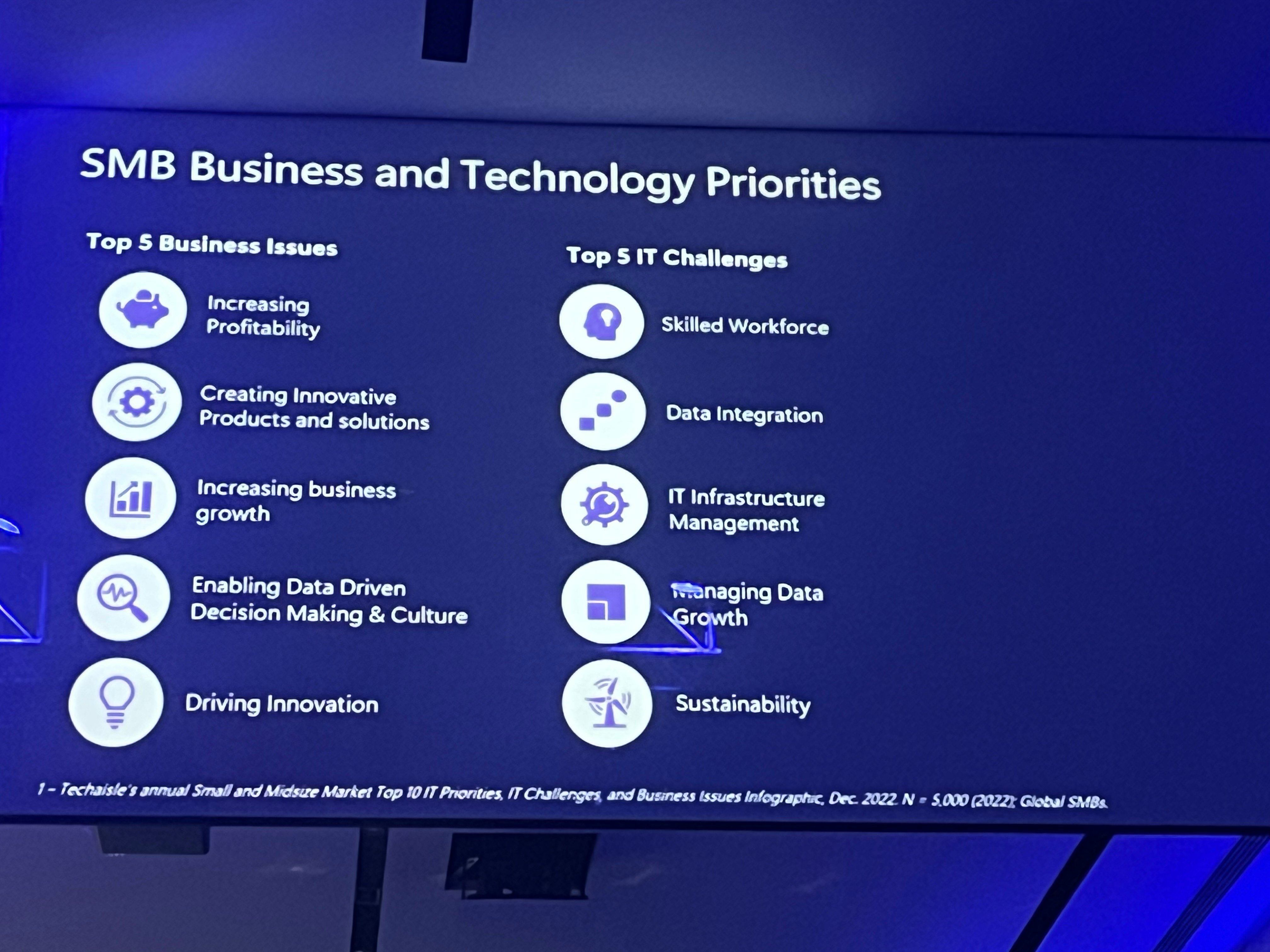
AI and specifically Co-Pilot will play a huge part in this next era of work with 87% of organisations believing that AI will give them a competitive edge.
The aim for Co-Pilot is to empower every end user and improve productivity. Of those using Co-Pilot already since its launch a few months ago, 77% said they didnt want to give the tool up.
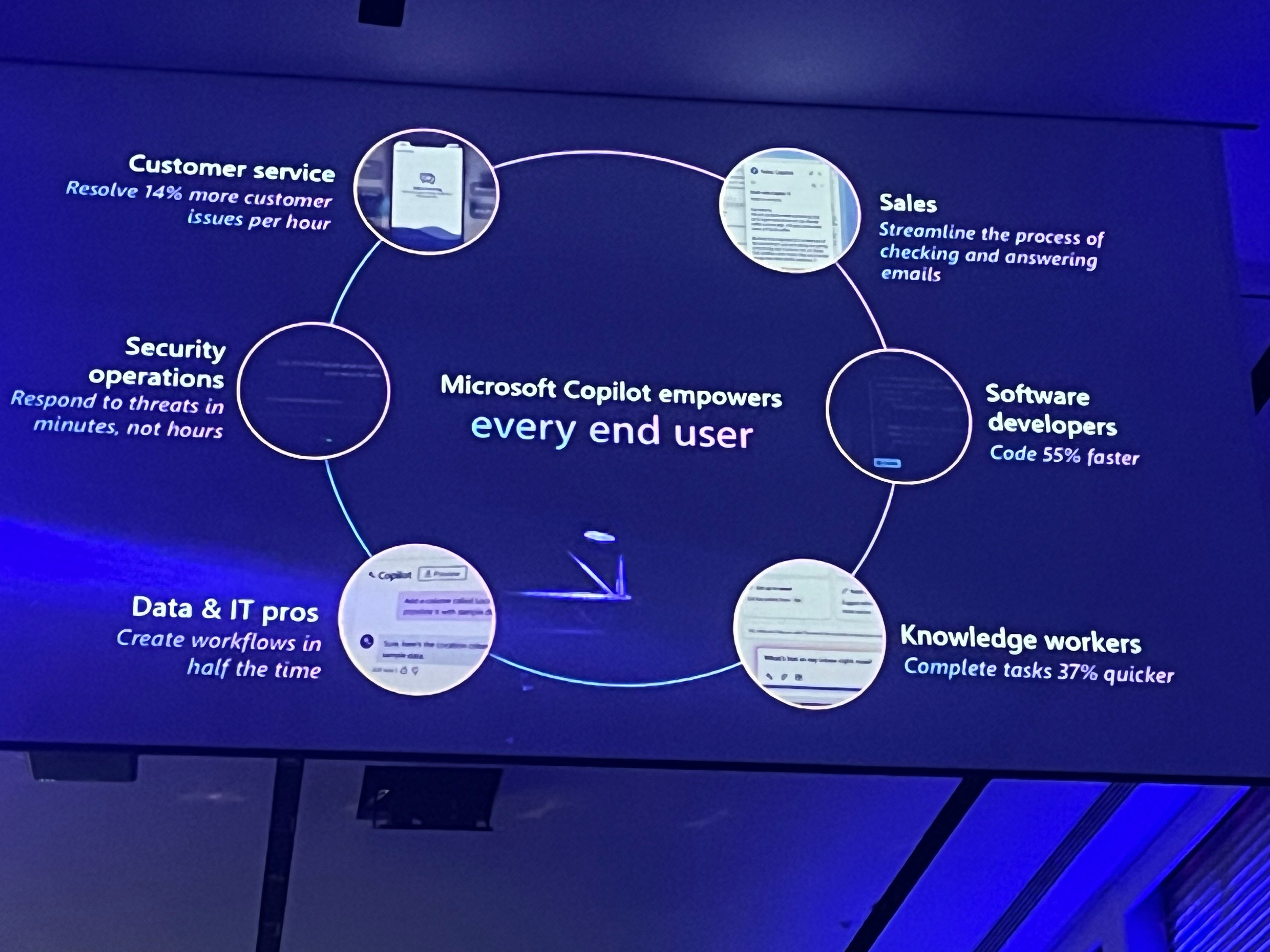
Market forecasts indicate scary numbers with a huge market opportunity for service providors.
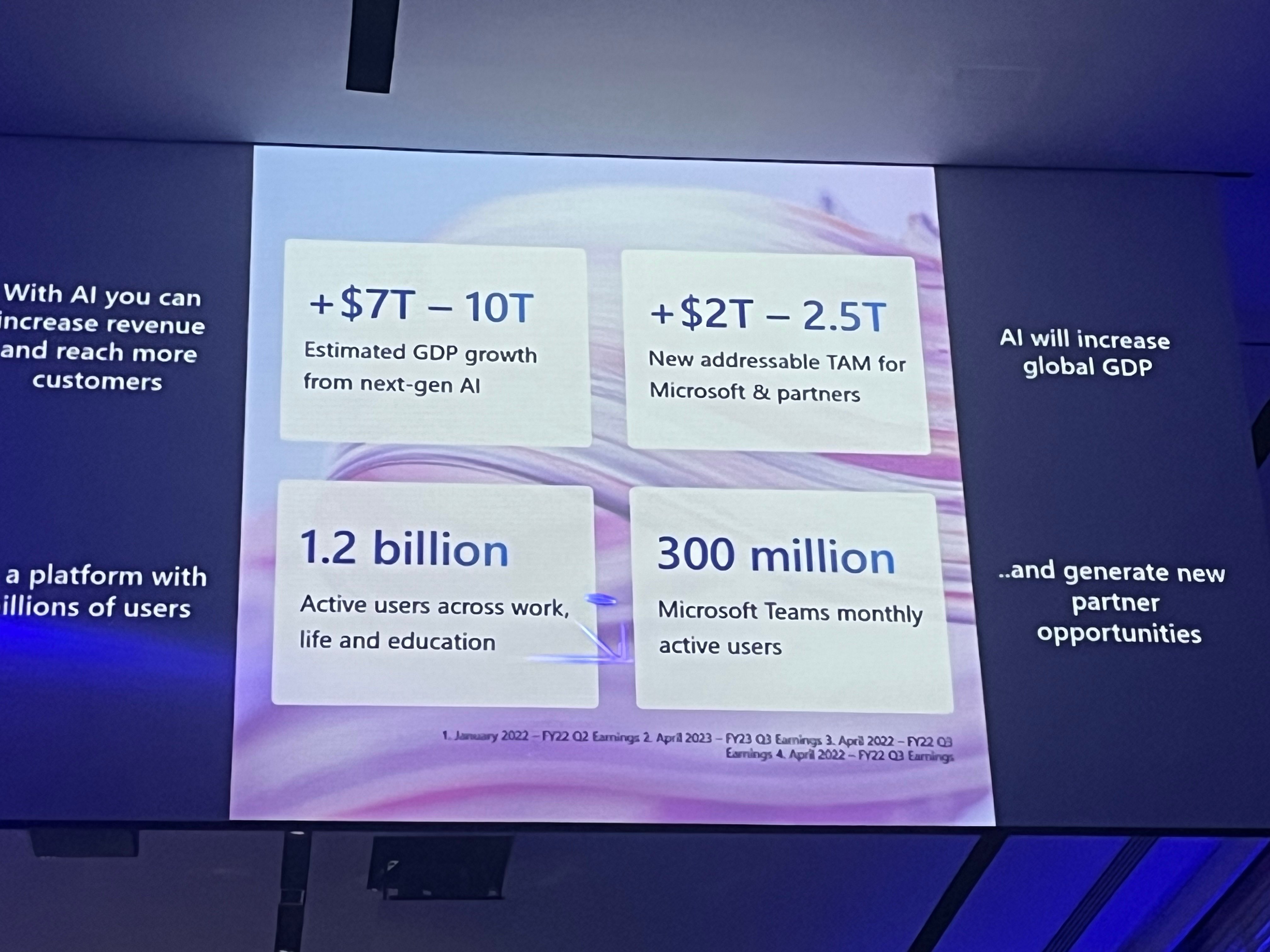
Erwin went onto discuss how end user customers (and their supporting customers) could start adopting AI and introduced the Migrate to Innovate approach, which has its foundations in security and data before leveraging the power of AI. In relation to an organisations approach to AI strategy said that waiting to see would be a huge mistake. Citing the fact that it times of disruption, as we saw with the internet era markets change quickly and if you're not taking the lead, you'll be left behind. We can all think of house hold names that no longer exist because they failed to adapt.
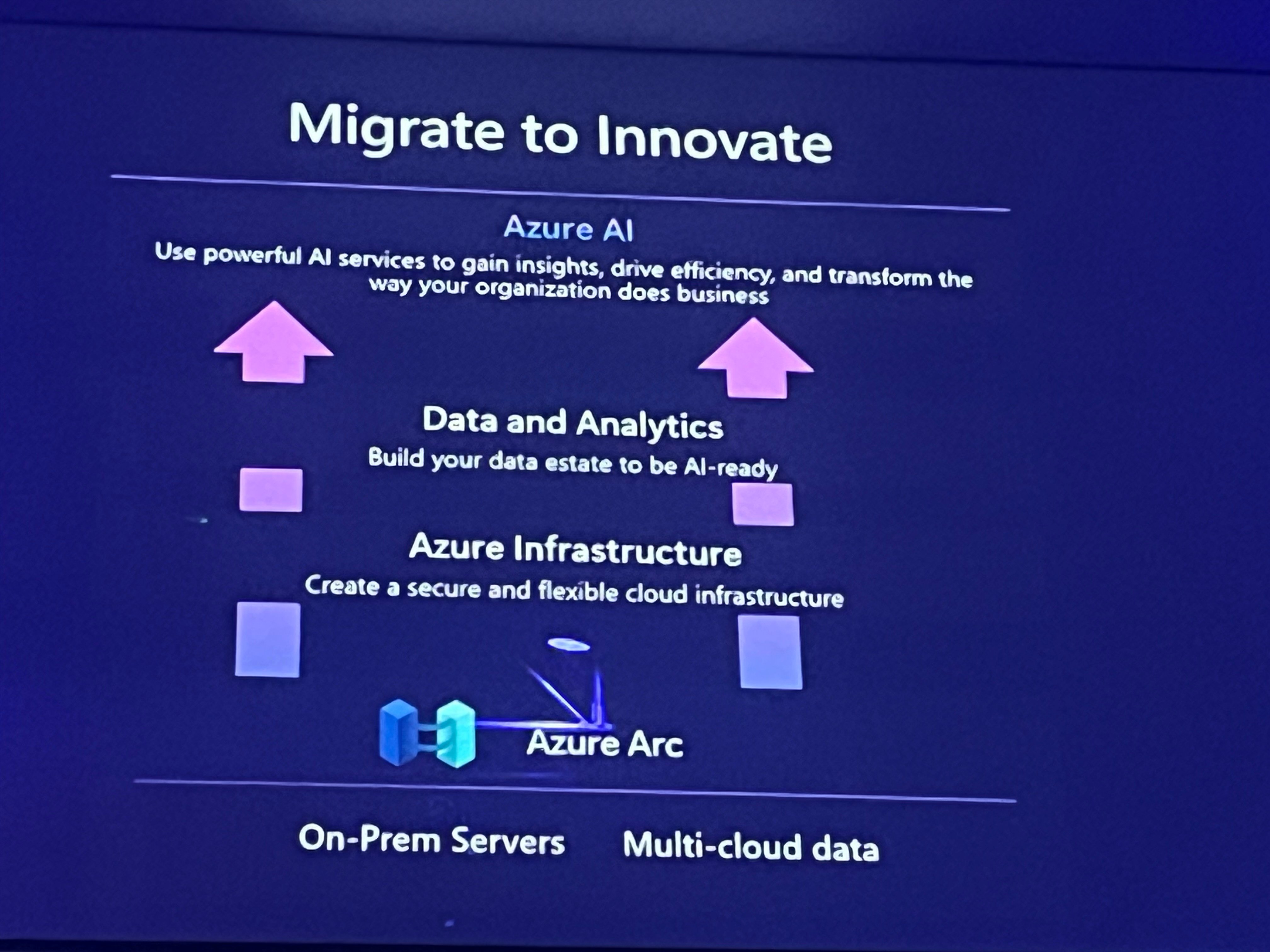
As early adopters of Co-Pilot for M365 we are already seeing productivity benefits from the platform and whilst we're still learning, excited to see where it takes us.
Danny Jenkins - CEO & Founder - ThreatLocker
How to write Malware & Protect with Zero Trust Strategy.
Danny's keynote was really inventive essentially taking us through the approach a hacker takes and how they can improve the effectiveness of their efforts to steal data as the backdrop to discussing how you can protect yourselves against the threat.
Malware as Danny explains, is just software and as malware defenses have become more intelligent and sophisticated, so has malware. To set the tone, Danny went through 4 ways to improve the effectiveness of deploying Malware:-
- Write unique code - if its not been seen before (and you can of course use ChatGPT for help) its more likely to bypass modern security tools.
- Use an Icon - it significantly increase the chance of getting through and being executed by a user.
- Sign your code - scarily, its not that difficult to do either.
- Use local servers - An attack from a far away land is more likely to be picked up as suspicious versus something thats local.
The Keynote also outlined the 3 most common ways with which Malware was being deployed.
- Social Engineering - Phishing for example
- Vulnerabilities in Systems - Countless examples of this over the years which have been exploited
- Supply Chain Attacks - targeting the weaker parts of said chain
Whilst Next Gen AI and EDR solutions do a good job of depending against the known. We remain in a position where the unknown is more challenging and thats what Threatlocker aims to help prevent with their 3 point approach which is based around only allowing the applications you need and only allowing those applications to execute the tasks they need to execute. Detection, should be the last resort.
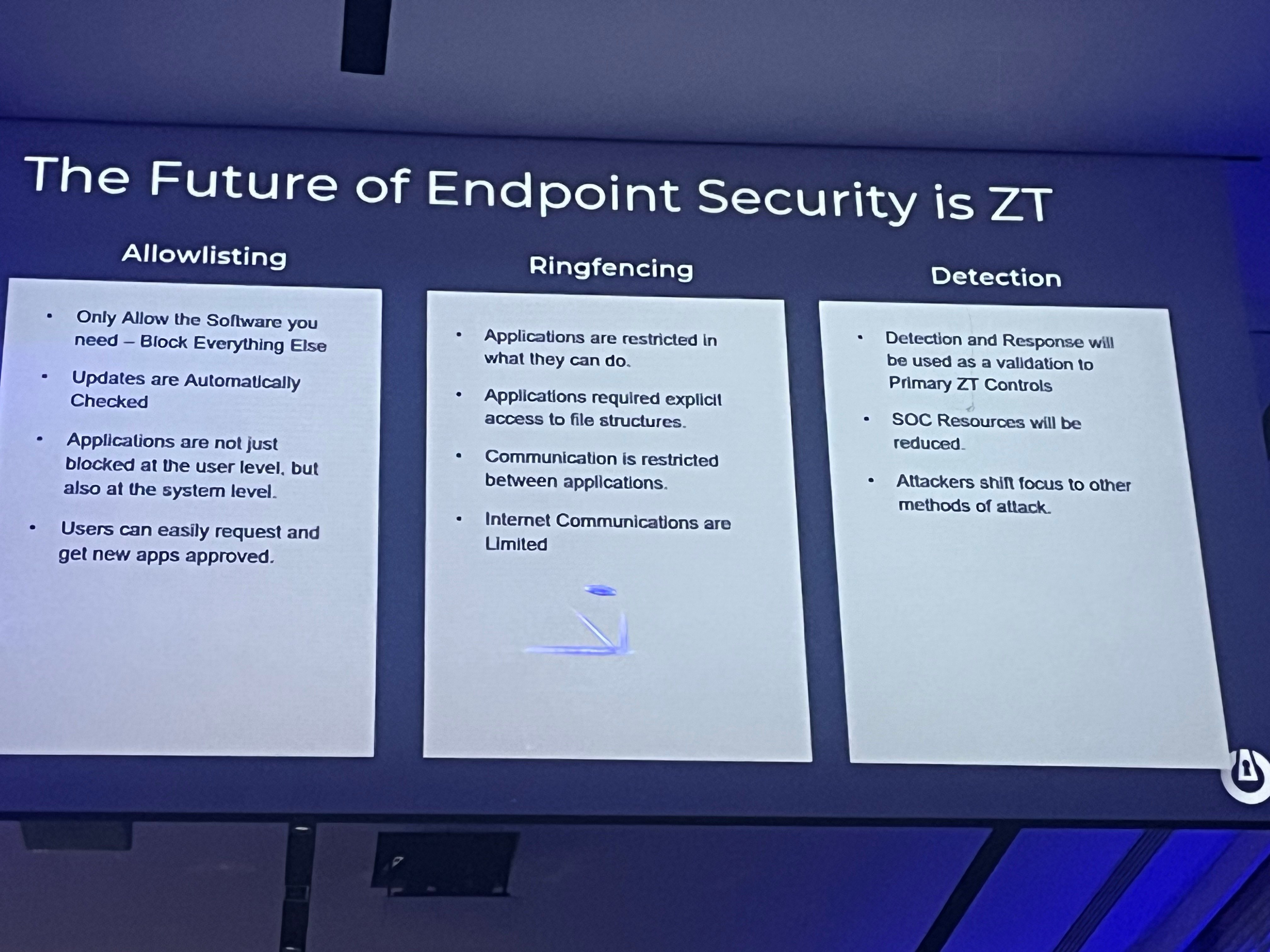
Tim Coach - Channel Chief, Pia
AI versus RPA or Both? Best of both worlds.
Tim brings huge energy to the stage and has a real presence. I was looking forward to this session not just because of the headline topic, but also because we've had cursory looks at Pia as part of our own Helpdesk operation and I was curious as to how their product had developed.
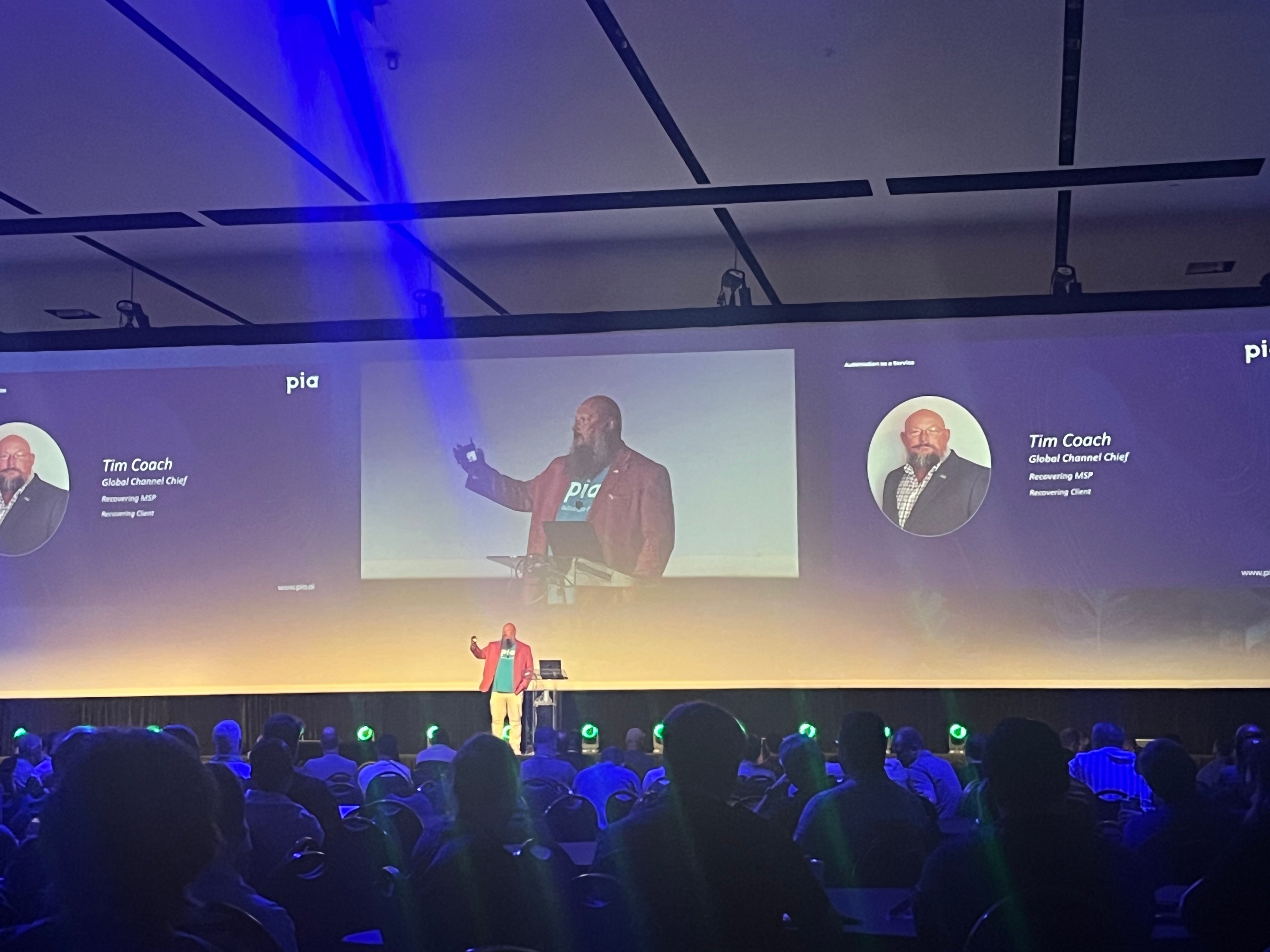
Defining the terms:-
- Robotic Process Automation (RPA) - Is the process of automating a human, manual task
- Artificial Intelligence (AI) - Makes the decisions in place of a human.
There is no doubt in my mind that both RPA and AI will help reshape what a helpdesk looks like in the coming years and Pia have made real strides to taking the headache out of achieving this objective on behalf of MSPs. Labour costs remain the main overhead for an MSP and there is a requirement to make work more interesting for the staff.
Tim explained the evolution of Pia's product which included:-
- AI Engineer Assist - Which would be a set of automations, driven by human behavior with a "click next" approach
- AI Driven Triage - Whereby inbound tickets would be triaged automatically
- Smart Forms - Whereby users would have a URL and could fill in a form which leads them towards automatd fixes or helps speed up the troubleshooting process.
- Zero Touch Automation - Where AI makes decisions, performs tasks and resolves issues and the role of the human is to provide quality control.
Tims overarching point is that the technology exisits for MSP's to leverage automation, control labour costs and offer more predictability to the overhead of running a managed service business.
He closed by pointing out that you should aim to adopt both and not be made to choose.
Scott Manchester - Vice President of Product Management Azure Virtual Desktop and Windows 365 - Microsoft
Proactive Innovation with Azure Virtual Desktop and Windows 365.
One of the reasons why Nerdiocon is such an important date in the calendar for us is for sessions like this one. We've become specialists in this space and clients rely on us to provide insight on whats next and how they can best leverage technology. There is noone better to provide an insight on what the industry is demanding of Microsoft and how they are responding.
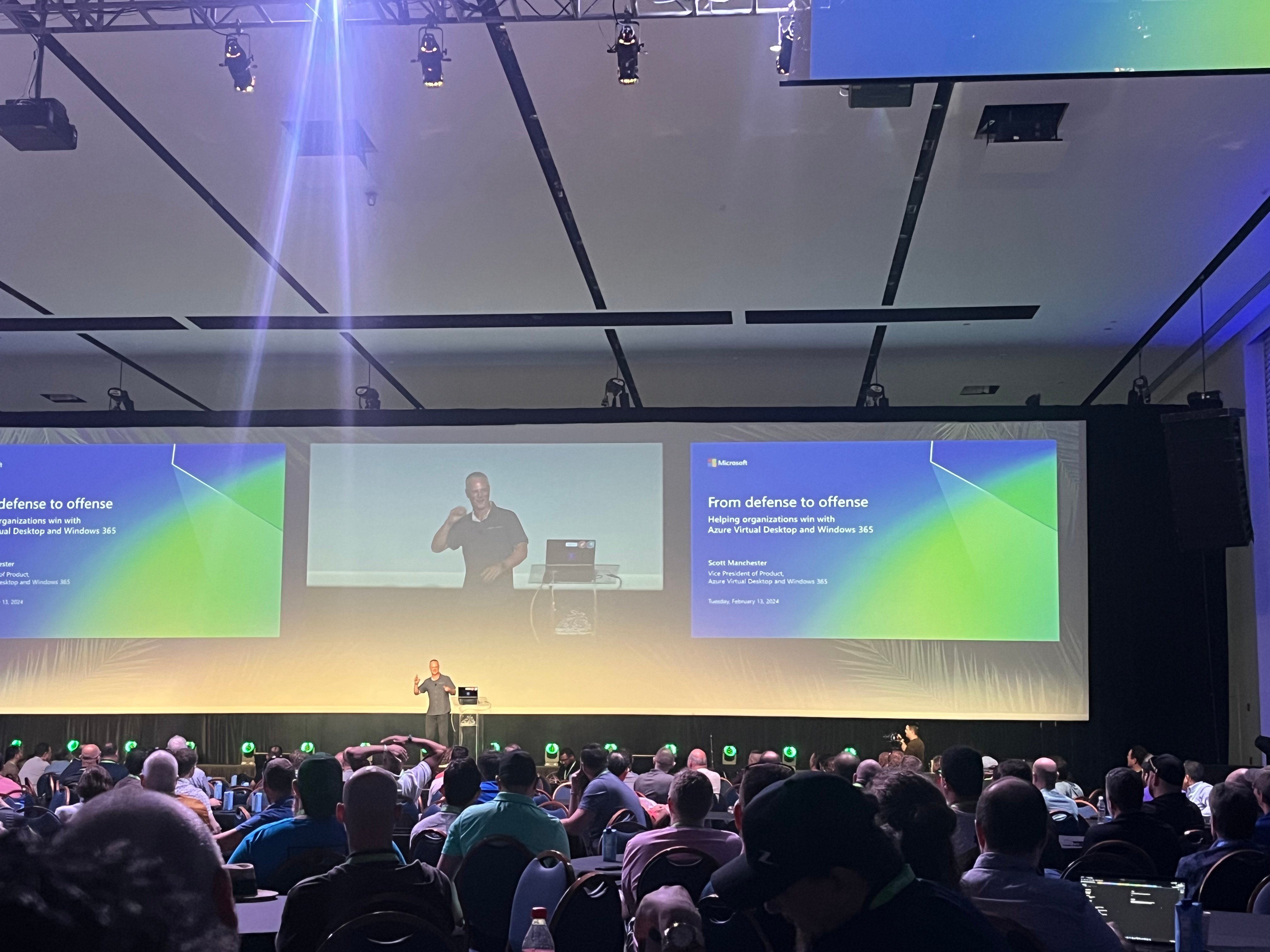
In this session Scott reflected on Microsoft's progress over the last 6 years as well as the innovation strategy for AVD and W365.
Recent feature releases for W365 including SSO and passwordless authentication, a wider range of machine SKUs including GPU SKUs and a range of security features has moved W365 that little bit further forward.
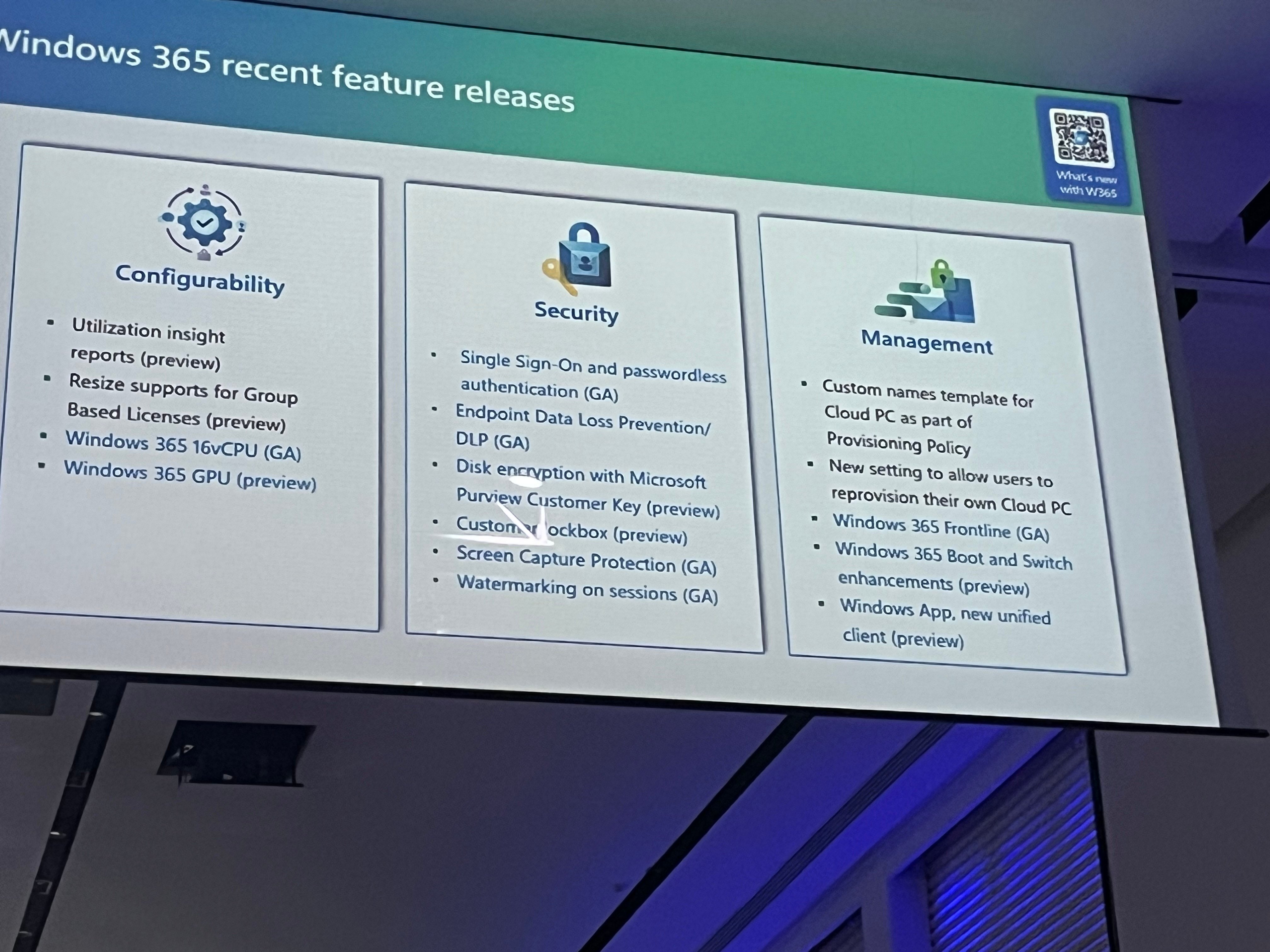
AVD has seen similar innovation, perhaps the biggest news however is the ability to extend AVD to on-prem which fits a number of use cases where workloads cannot easily be moved to the cloud, whether that be for security or functionality reasons. Microsoft now supports Hybrid, so you can move VM's seemlessly between cloud and on-prem or operate in a hybrid mode. This solves a number of challenges for clients who previously couldnt consider AVD.
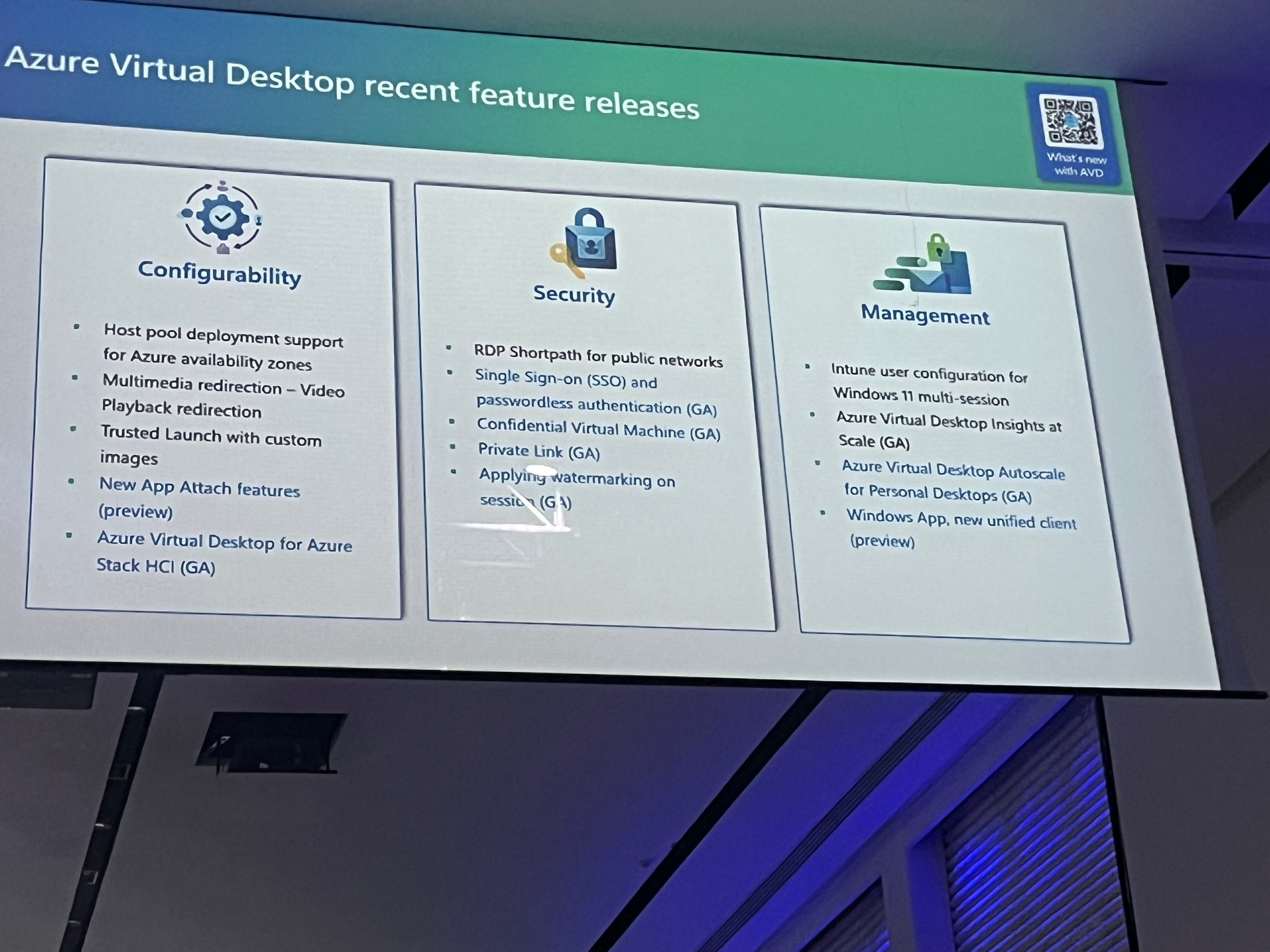
Scott spoke about how IT priorities were shifting and there was a need to support a new era of business needs which includes distributed workforces and the need to accomodate the AI conversation; whilst being aware of the relentless security threats that impact clients everyday.
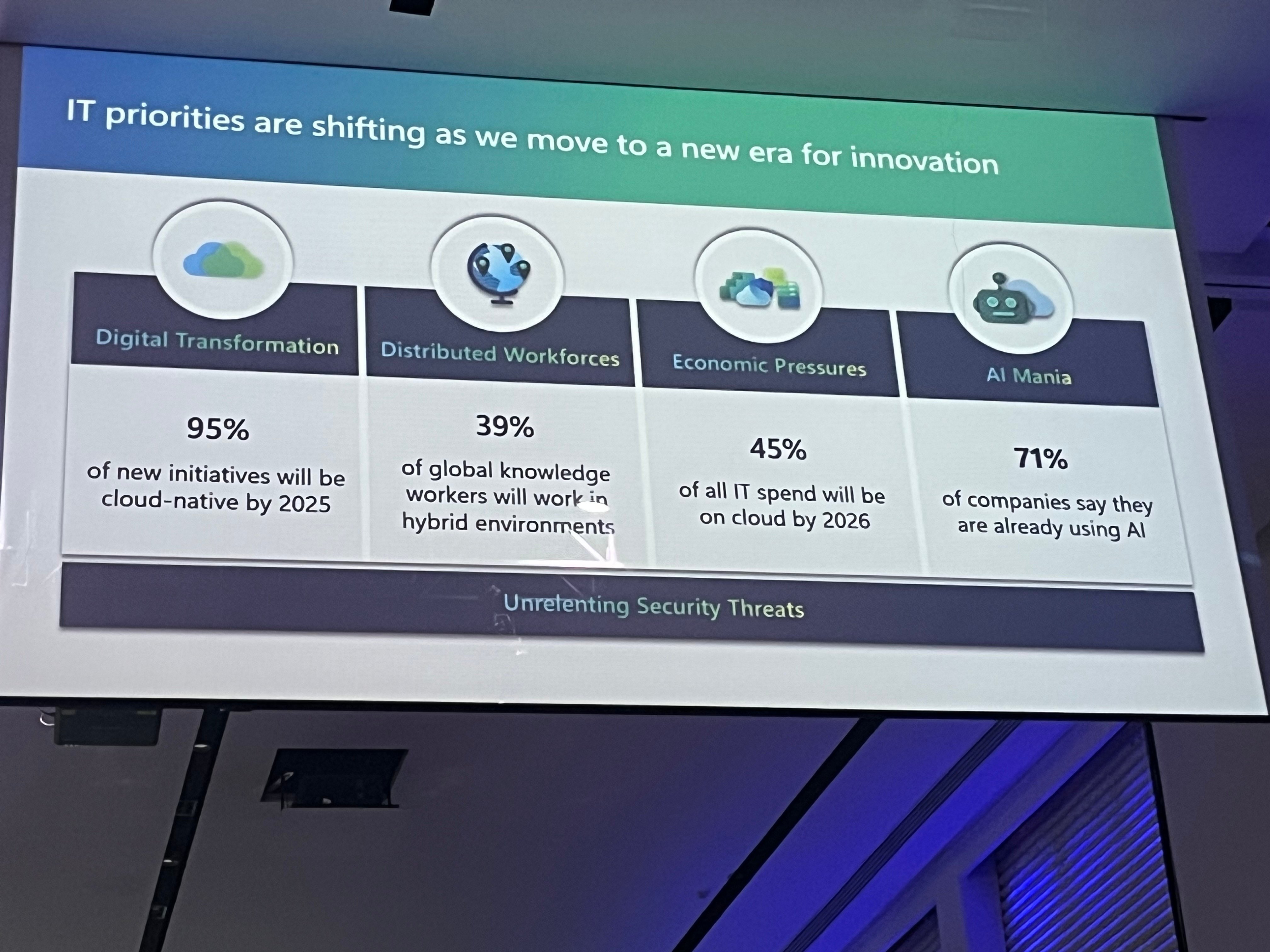
There continues to be a debate about which technology (AVD & W365) fits which scenario and Scott did a good job of explaining that there is a deliberate overlap with the feature set of both products which could fit the same working scenario. As both products mature, the suitability of one versus the other (or both) is becoming clearer.
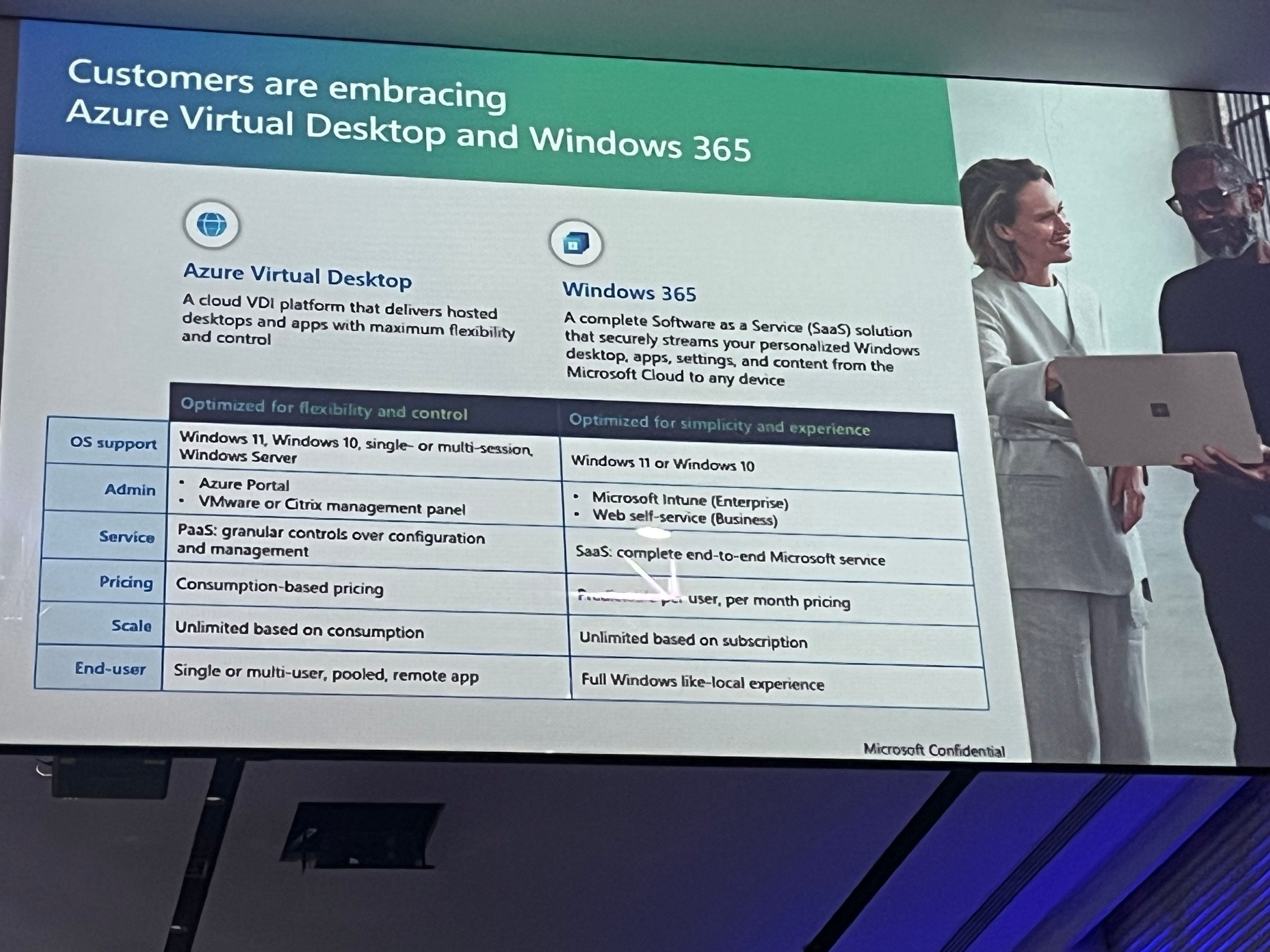
There were some great questions posed at the end of the session which demonstrated how much partner feedback was being considered as part of the product development process. One of the major developments is the focus on improving dropped connections by 25% in the next phase of updates, a statement which was welcomed by the audience.
As a whollistic view on the first day, the obvious shift from last years conference is the focus upon AI and how that is being woven into nearly every vendor technology. This really will be a disruptive phase for our industry and every other type of business; its a really exciting time to be in the space.
...... Signing off for day 1.

About the Author: Mike Starnes
Mike has worked in the IT Industry for over 20 years. If he's not talking technology, he'll be reading, playing football or trying to embarrass his daughters.

